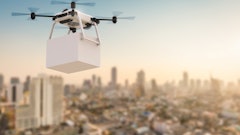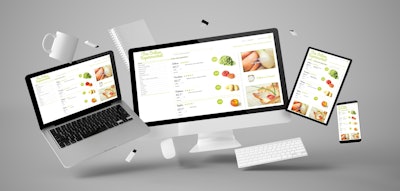
In April 2019, EMarketer reported that “U.S. grocery ecommerce—specifically online food and beverage sales—will grow 18.2 percent to $19.89 billion in 2019.” The EMarketer report mentions Amazon, Kroger and Walmart as key players in the development of online food ordering and delivery channels.
Nevertheless, as traditionally “in-store” grocery retailers focus on online orders and deliveries, challenges present themselves in the form of e-commerce channel development, integration and support of systems and business processes for online sales and deliveries, as well as ways to assure customer satisfaction.
Kroger is just one example.
In 2018, the chain’s online sales increased by 66 percent, but in early 2019, Kroger CEO Rodney McMullen also acknowledged that the company was behind where he wanted it to be, and that part of the challenge was forming productive partnerships with startups that specialized in online orders and deliveries that were capable of providing an impetus to the development of Kroger’s online food channels. There were also difficulties integrating online technologies and business processes into Kroger’s existing systems and operations.
Since then, Kroger has moved forward.
It now sells with Instacart, which has made products from 1,600 stores available quickly online—without Kroger having to set up and deploy its own online ordering applications. This gives Kroger time to develop its own proprietary e-commerce platform, while it meets online customer needs today.
On the backend of online ordering and in the food supply chain itself, Kroger has partnered with online grocer Ocado in the U.K. in order to use robotics in distribution centers for faster fulfillment of customer orders.
The Kroger story is not uncommon in the food and beverage industry. Companies understand that they have to meet the online ordering needs of their customers, but they are also mindful of prematurely disrupting age-old processes that have effectively run their businesses for decades. They are also sensitive to the impact that any new business investment has on food and beverage margins that are already paper thin.
Worries of Food and Beverage Executives
“There are a number of things that food and beverage executives worry about when they think about e-commerce,” said Nabil Malouli, vice president and global e-commerce lead for the DHL supply chain. “The first worry is that revenue from e-commerce is uncertain. At present, only 2 percent to 3 percent of grocery sales are online, so companies need to move carefully into the online space.
Second, the technology changes with e-commerce. Existing technology in the supply chain and other systems was set up for in-store operations, so there have to be adjustments.
Finally, there are the mind-sets of the executives themselves. Since online sales revenue is still very small, there is a natural resistance toward investing too much too soon—yet everyone admits that online sales are the fastest-growing food and beverage channel. You want to be in the online space because if you’re not, you risk not being competitive in the future—but you also want to measure your investments.”
Dealing with the inventory disparities between stores and distribution centers is an additional major challenge.
“These disparities that often exist between stores as well as distribution centers already make it difficult to accurately forecast demand and plan for replenishment,” said Pratik Soni, CEO at Omnichain, a supply chain solutions provider. “They also make it hard to align on important aspects of grocery e-commerce. Questions start to come up, such as: Who is going to fulfill a customer’s order? The distribution center or a nearby store? Or, how do we account for online or mobile sales into demand forecasts?”
Bringing the Goods to Market
Nowhere are the challenges for online food and beverage ordering and fulfillment greater than in the supply chain itself.
“The logistics of delivering food from store to consumer, or from farm to table are significantly different than they are in in-store customer fulfillment,” said Malouli. “Because you’re delivering to the end consumer directly, there is a very low margin for error, and you need to maintain high quality for the goods that you deliver. There are also significantly higher levels of returns with online ordering, and you have to meet customer expectations on rapid order fulfillment. The latter is one reason why automation and robotics in warehouse operations are expanding. They help speed supply chain performance.”
Understanding What Customers Want
Malouli says that the number one question food and beverage companies ask when they consider investing in logistics solutions for online shopping is what other companies are doing. The second question is what customers really want.
“That’s why we do consumer market studies,” said Malouli, “We can show prospects and clients where the market is heading and what customers are asking for—and how we can make supply chain solutions like logistics work economically and profitably.”
Studies reveal that online food and beverage customers, especially in the millennial segment, want convenience, choice and the privacy of eating at home. There are websites that help them cost-compare food and beverage deliveries from different stores, but overall, they don’t seem to mind paying extra for the convenience of having their food delivered.
“I often deliver to students in the U District (University of Washington), and it amazes me that students are willing to pay twice or three times more for food that they could buy at a store just blocks away,” said a Seattle friend who drives for Postmates.
“Consumers want their orders to arrive quickly and accurately to prevent spoilage,” said Soni. “If a grocery retailer is fulfilling orders directly from their stores, they need insight into which stores have every item in the customer’s order, as well as which one is the closest to their home.”
Not to be overlooked either is the segment of aging baby boomers and retirees who are happy to “eat in” with home delivery instead of having to drive to the market. Although they are likely to be more cost-conscious, they often are willing to pay a premium for home delivery.
That being said, there are still plenty of reasons to go to a supermarket—whether it is the social experience of shopping, of seeing and selecting your own food firsthand, of sampling new foods and beverages, or of enjoying the pleasant atmosphere of a place that has been well merchandised.
“This is an important fact for food and beverage companies to remember in their strategies,” said Malouli. “There will always be a place for in-store shopping, even as online shopping expands.”
In other words, what companies have to deliver to their customers is an integrated omnichannel experience so that, to the customer, it doesn’t matter if he or she purchases or returns items online or in-store. The treatment is consistent. The customer never hears words like, “I’m sorry, we can’t process your return as you bought it from the online store.”
Best Practices
Bringing all channels together to create a unified customer experience is one challenge food and beverage companies face—but so, too, is balancing demand forecasting and replenishment to minimize waste, since grocery stores in 2018 accounted for 10 percent of total U.S. food waste.
“The food and beverage business is perhaps the most challenging to balance supply with demand due to the perishable nature of food products,” said Soni. “Most grocery retailers find themselves constantly in a reactive mode, which presents challenges in costs and waste. Namely, grocery stores can’t sell items past their expiration date, so any excess product becomes considerable waste. On the other hand, under-project demand, and you have unhappy customers and lost sales. It is already challenging enough trying to forecast demand at the store level—e-commerce only brings a whole new dimension to the equation.”
So, what are the best actions for grocers to take right now with their e-commerce efforts?
- Research technology trends. The industry already knows that more business will be conducted online, so the key is to be ready for it. “From my perspective, people should not be looking at today’s technology, but at what the technology is likely to be like in five or 10 years,” said Malouli.
- Don’t be late to market. The online segment of food and beverage sales is still very small, but that’s no excuse to wait. The first into the space, with the best processes and technology, will be best positioned to capture this market when it explodes.
- Integrate your systems. The tried and true processes that support in-store retail shopping won’t all work for e-commerce. This is the time to revisit processes and systems to see if they can be enhanced, or if they need to be ticketed for replacement,
- Look for an experienced e-commerce partner. There are companies in the supply chain, in logistics, in distribution and in online selling that already are heavily engaged in e-commerce. Even if their experience is in other industries, they know what e-commerce needs to accomplish. For small- and mid-sized companies, being able to outsource portions of their e-commerce operations can be the difference between succeeding—or not. For large food and beverage chains, the ultimate goal might be to develop your own proprietary e-commerce systems and processes because you have the internal expertise—but this takes time. While you are in the process, an outsource solution can enable you to meet your customer demands today.
- Know your customer. Online grocery sales could reach $100 billion by 2025. A survey conducted by marketing consultancy Valassis revealed that online shoppers like to save time (66 percent); enjoy the larger selection of products (66 percent); and find the online experience easier than shopping in-store (65 percent)—but shoppers also miss the sensory experience of touching and smelling produce (64 percent) and are uncomfortable having someone else pick out their produce or other perishable items (62 percent).
While these are general statistics, every store has its brand to promote, and the job of also understanding the uniqueness of its customers. Understanding who customers are, and how they want their food and beverages delivered is central to retaining them in a highly competitive industry.
That’s what e-commerce must achieve.





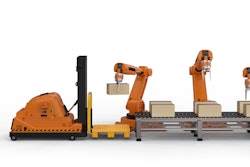
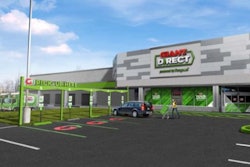
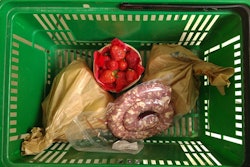




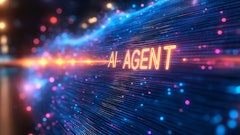


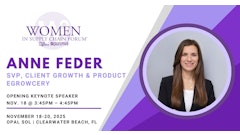

![Top Tech Startup Logo 2025 Vertical [color] (1)](https://img.foodlogistics.com/mindful/acbm/workspaces/default/uploads/2025/07/top-tech-startup-logo-2025-vertical-color-1.pZkBK95TLe.png?ar=16%3A9&auto=format%2Ccompress&bg=fff&fill-color=fff&fit=fill&h=135&q=70&w=240)
